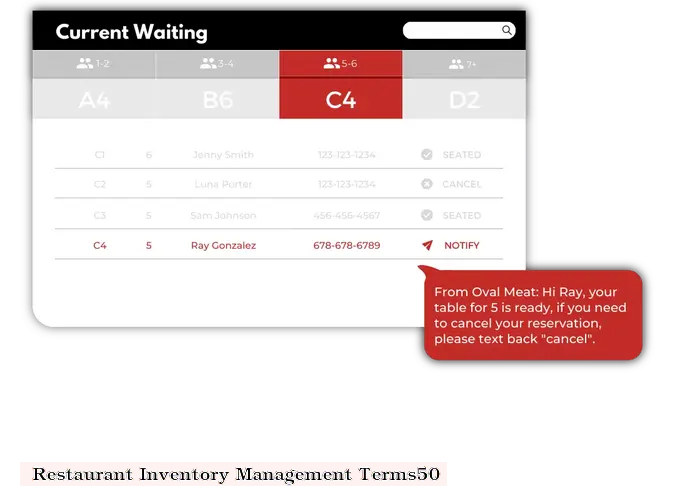

1. Inventory: This refers to the raw materials, ingredients, and supplies that a restaurant has on hand. This can include food items, beverages, paper products, cleaning supplies, and more.
2. Inventory Management: This is the process of tracking, organizing, and controlling a restaurant's inventory to ensure that it is used efficiently, and that stock levels are maintained at optimal levels.
3. Par Level: This is the minimum amount of a particular inventory item that a restaurant should keep in stock at all times. When inventory levels fall below this level, it signals that it's time to reorder.
4. ABC Analysis: This is a technique for categorizing inventory items based on their importance. "A" items are high-value, high-use items that should be monitored closely. "B" items are moderate-value, moderate-use items, while "C" items are low-value, low-use items.
5. Stock Turnover: This is a measure of how quickly a restaurant is using its inventory. It is calculated by dividing the cost of goods sold (COGS) by the average inventory value. A higher stock turnover rate is generally desirable, as it indicates that the restaurant is using its inventory efficiently.
6. Shrinkage: This refers to the difference between the amount of inventory that a restaurant should have on hand and the amount that is actually on hand. Shrinkage can be caused by a variety of factors, including theft, spoilage, waste, and errors in tracking and recording inventory.
7. First-In, First-Out (FIFO): This is a method of inventory management that prioritizes using the oldest inventory items first. This helps to ensure that inventory doesn't expire or become obsolete before it can be used.
8. Perpetual Inventory: This is a system for tracking inventory levels in real-time. It involves continuously updating inventory records as items are received, used, or sold.
9. Physical Inventory: This is a periodic inventory count in which all inventory items are physically counted and reconciled with inventory records.
10. Variance Analysis: This is a process for identifying and analyzing discrepancies between actual and expected inventory levels. It involves comparing actual inventory counts with purchase orders, invoices, and other records to identify the source of any discrepancies.
Understanding these terms and concepts is essential for effective restaurant inventory management. By using best practices, such as FIFO, perpetual inventory, and variance analysis, restaurants can ensure that they are using their inventory efficiently, reducing waste and shrinkage, and maintaining optimal stock levels.
DISCLAIMER: This information is provided for general informational purposes only, and publication does not constitute an endorsement. Kwick365 does not warrant the accuracy or completeness of any information, text, graphics, links, or other items contained within this content. Kwick365 does not guarantee you will achieve any specific results if you follow any advice herein. It may be advisable for you to consult with a professional such as a lawyer, accountant, or business advisor for advice specific to your situation.

today
Copyright © 2026 Kwick365.com
Designed by KwickPOS is the best restaurant POS